Welcome to Moda Fabrics!
Designing Women: Quilt Designers Share Their Stories
Designing Women: Quilt Designers Share Their Stories
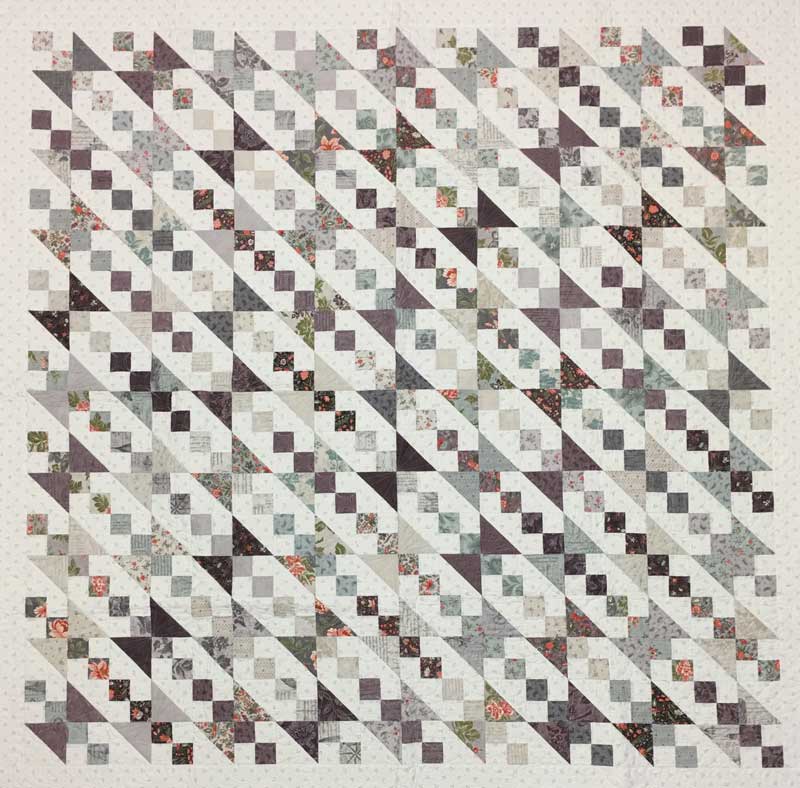 Northern Lights—a Cake Mix quilt pattern designed by Carrie Nelson
Northern Lights—a Cake Mix quilt pattern designed by Carrie Nelson
Seems simple enough—you take some fabric, cut it up, move the pieces around, sew them back together and what’ve you got? A quilt top.
What’s far from simple though, is the incredible variety of ways you can do that. From the most basic four-patch to the most complex Mrs. Billings coverlet, the way those pieces are sliced and re-combined makes all the difference.
That difference accounts for the plethora of quilt patterns. Quilt designers are inspired by everything from contemporary magazine ads to antique color schemes, and that mean there’s a pattern to suit just about everyone. Here are three quilt pattern designers who come at their designing from a variety of ways.
First up is The Cutting Table’s very own Carrie Nelson. Carrie’s been designing quilts nearly as long as she’s been making them, and I decided to talk with her about quilt design after a we talked about how she came up with the idea for Cake Mixes. I was impressed by the way she rattled off dimensions, and the mental gyrations that took place as she envisioned ways to make efficient use of a 10” square.
 Bella Solids Churn Dash created with a Moda Cake Mix
Bella Solids Churn Dash created with a Moda Cake Mix
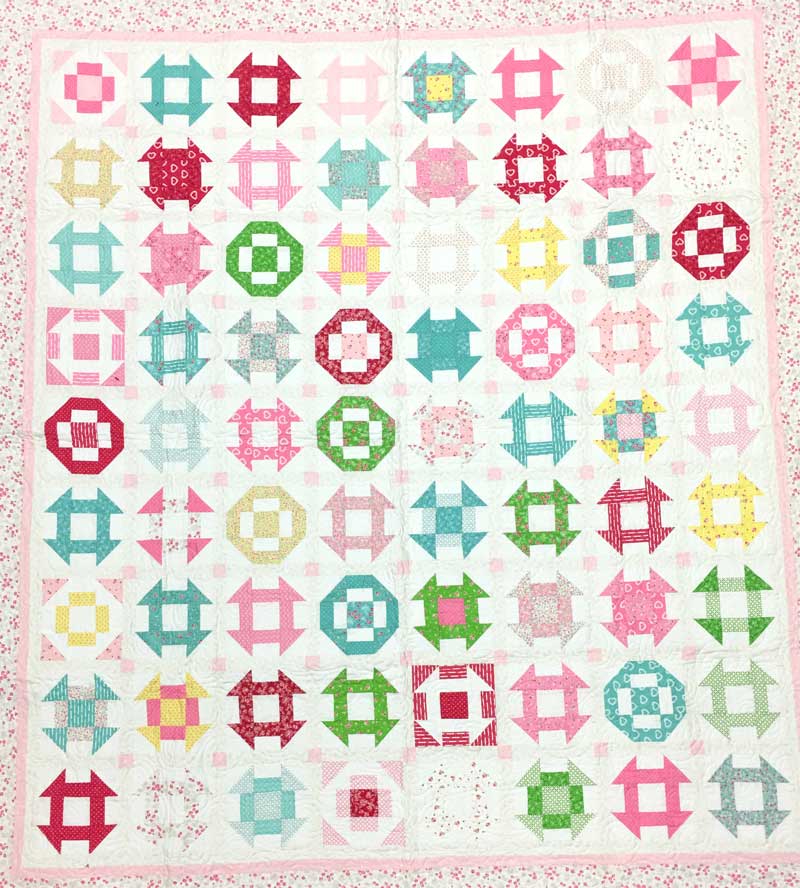 First Romance Cake Mix Churn Dash
First Romance Cake Mix Churn Dash
But Cake Mixes are relatively recent in Carrie’s quilt design career. She’s designed dozens under her Miss Rosie Quilt Company name, including her Little Bites and Schnibbles quilts “When I design a quilt I think ‘What sizes would I make this block?’ and then start coming up with numbers. I start playing with the math side of it and think about sashing and borders and how to cut it—with fat quarters, charm packs? If I change the size, what happens?” While she keeps track of numbers on paper, much of the design work is purely mental, and she will sometimes imagine three sizes for a quilt before committing it to paper.
 Tuppence Cake Mix quilt pattern designed by Carrie Nelson
Tuppence Cake Mix quilt pattern designed by Carrie Nelson
Fabric is instrumental in Carrie’s designs and she considers its scale when working out a quilt pattern. She also acknowledges that personal preference plays a big part in her designs, and that she loves quilts with lots of fabrics. She mentions Camille Roskelley’s Swoon pattern as an example. “I look at that block and think ‘genius!’ It’s a great, great design. But I think a 24” block should have 434 pieces!’” Carrie also thinks one sign of a good design is that it works in a variety of fabrics, and her designs certainly fit the bill.
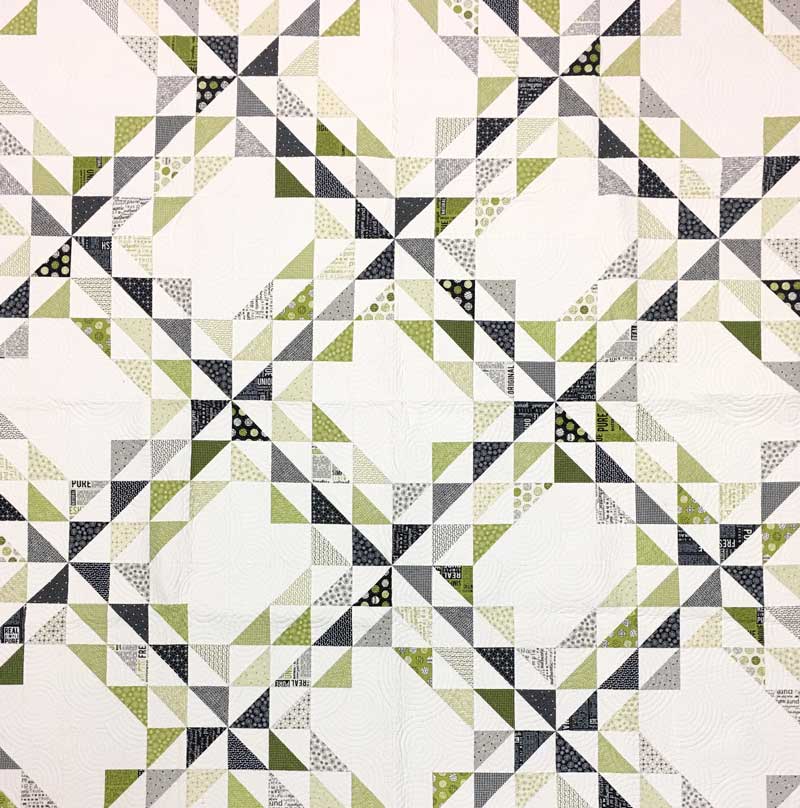 Authentic Etc Cake Mix Ocean Waves
Authentic Etc Cake Mix Ocean Waves
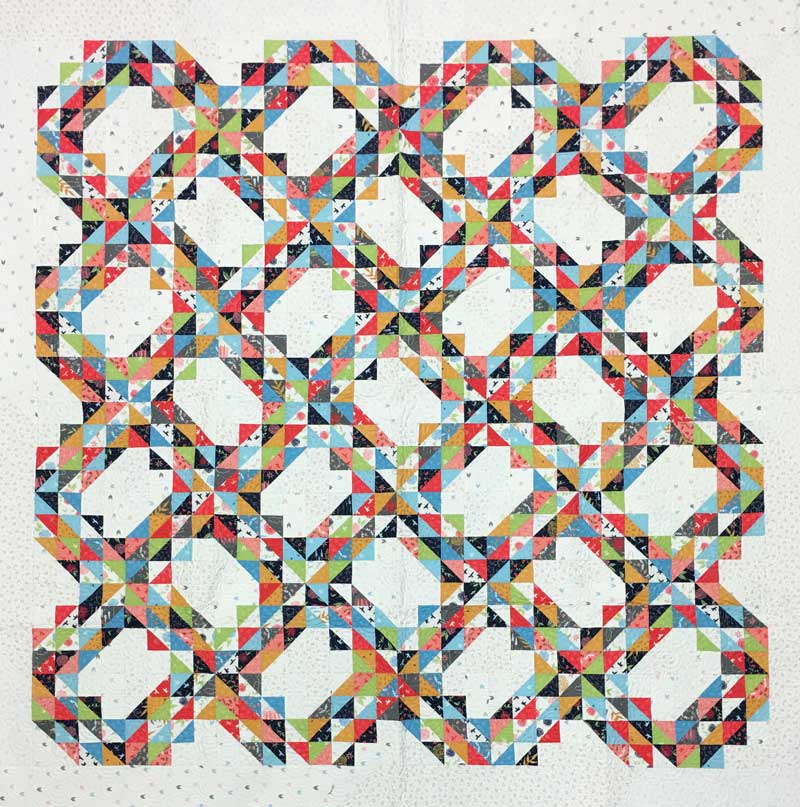 Creekside Cake Mix Ocean Waves
Creekside Cake Mix Ocean Waves
Laurie Simpson of Minick and Simpson is also a longtime designer—she’s been designing almost since she started quilting over 40 years ago—but her process is quite different from Carrie’s. Rather than starting with a piece of cut fabric, Laurie is inspired by ideas and images. “Vintage textiles, antiques, and antique quilts are inspiring, but it could also be a color combination I see somewhere—there’s no real formula,” she says.
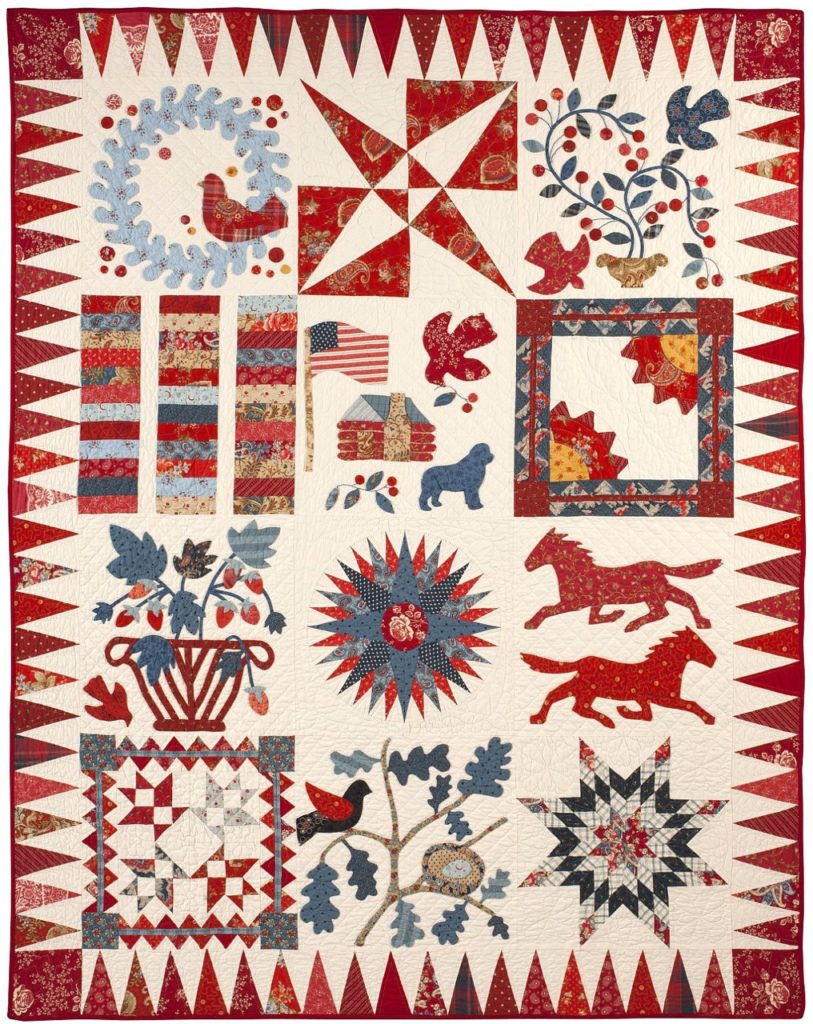 The Spirit of Sacajawea designed by Laurie Simpson of Minick and Simpson
The Spirit of Sacajawea designed by Laurie Simpson of Minick and Simpson
Once an idea comes, Laurie creates a “very, very, very rough sketch on notepaper.” Then, if she’s designing a quilt to work with a Minick and Simpson fabric line, she mentally figures which colors will go where, draws it on graph paper, and sends it to a graphic designer. After a lot of back and forth with the designer Laurie will start making the quilt, proofreading instructions and working out any kinks. For example, she’s working on a quilt now that includes appliqué and piecing. “We thought we’d appliqué it and then piece it, but it’s worked out to do it the other way around.”
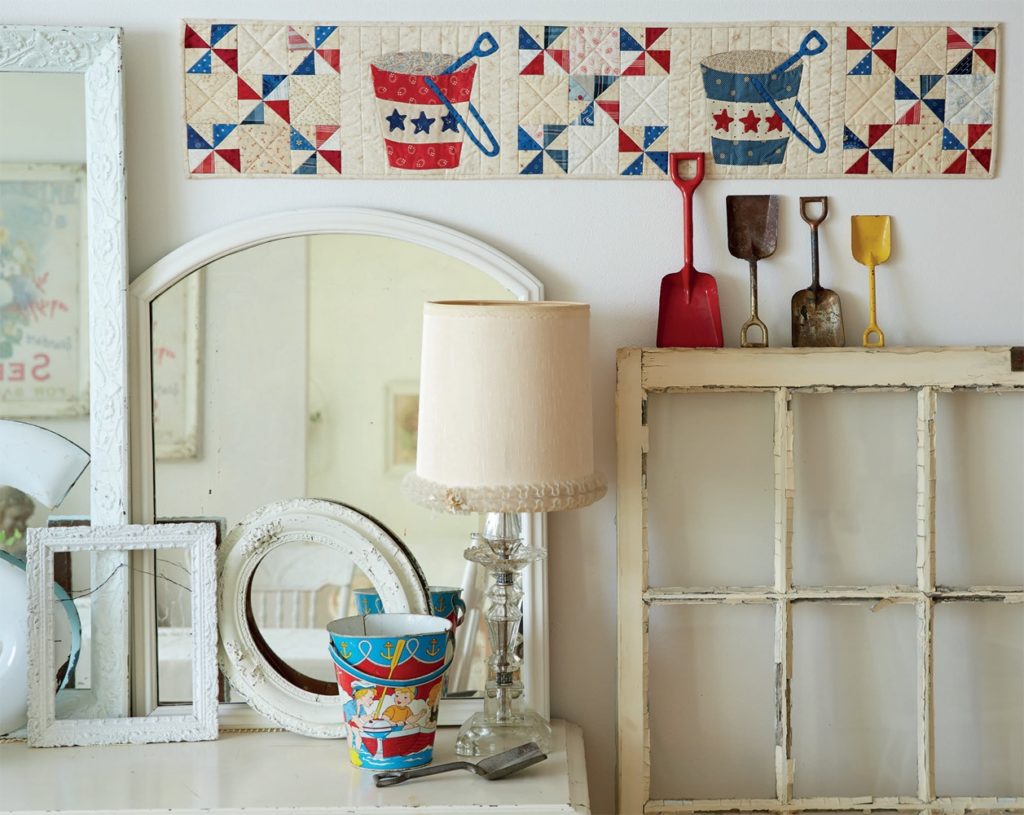 Sand Pail, and appliqued and pieced runner designed by Laurie Simpson
Sand Pail, and appliqued and pieced runner designed by Laurie Simpson
Creating quilts with customers in mind is an important consideration for designers, and one of Laurie’s new patterns “On the Plus Side,” resulted from a comment a customer made about how satisfying it was to piece a simple block from a previous sampler. “There are lots of plus quilts out there now and I wanted mine to be a little different, so I made it scrappy and used a whole lot of little blocks,” she said. She had a more modern border in mind and was doodling to create one when her sister and partner in fabric design Polly Minick sent her an image of an antique red-and-white quilt. “It’s almost exactly like my ‘modern’ doodles and it’s nearly 100 years old!” says Laurie.
 Laurie Simpson's On the Plus Side quilt
Laurie Simpson's On the Plus Side quilt
Moda designer Betsy Chutchian is also drawn to antique quilts, but her interest is deeply rooted in their history. Her patterns are frequently based on the quilts she collects and she stitches her version with reproduction fabrics that are true to the period in which the original quilt was made. “History just draws me in and I think about the original quilt maker and where her fabrics came from and where she got her design and how she likely made that quilt by candlelight,” says Betsy, whose patterns are often named for historical events and quilt makers. “I’m intrigued by how women created such works of beauty with what they had.”
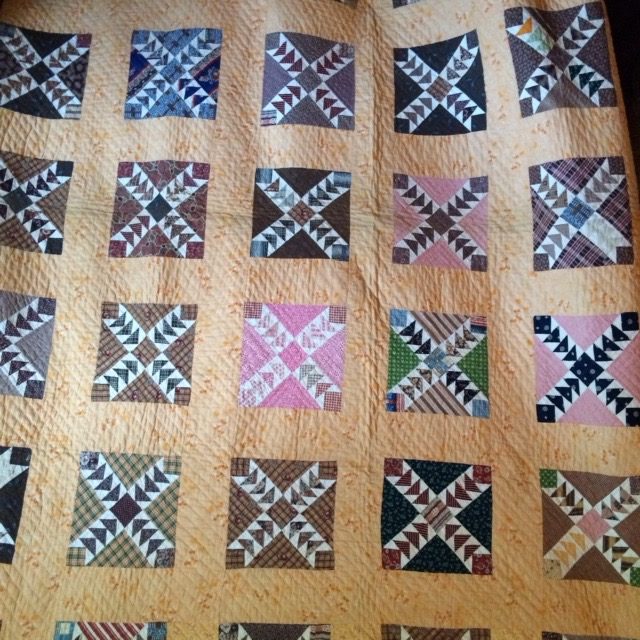 Antique Wild Goose chase that inspired Betsy's pattern
Antique Wild Goose chase that inspired Betsy's pattern
 Betsy's pattern "Hope's Journey," inspired by the antique wild goose chase quilt above.
Betsy's pattern "Hope's Journey," inspired by the antique wild goose chase quilt above.
The quilts that appeal to Betsy are often a “package deal,” combining blocks, fabrics, and colors that she loves. But she may change the scale of an antique quilt pattern, noting that many older quilts have too many small pieces to make them appealing to modern quilters. Betsy taught herself to design and quilt simultaneously, in 1980, after graduating from college. “I wanted to make things for my daughter, so I designed,” she says simply.
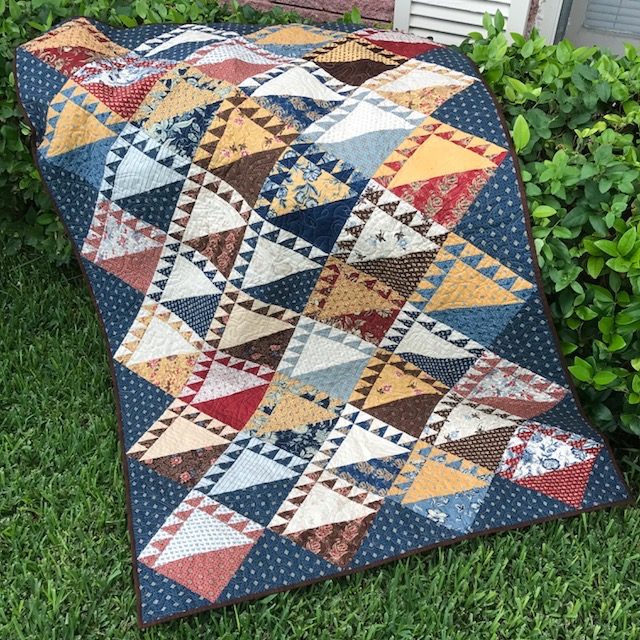 Betsy's Tennessee Lady uses fabric from her Rachel Remembered line, the prints of which correspond to the same time period as the antique quilt that inspired this pattern. This quilt uses one layer cake, one charm pack, and setting fabric.
Betsy's Tennessee Lady uses fabric from her Rachel Remembered line, the prints of which correspond to the same time period as the antique quilt that inspired this pattern. This quilt uses one layer cake, one charm pack, and setting fabric.
In addition to changing scale, Betsy, who favors graph paper for her design work, also changes block sizes. “A lot of antique blocks don’t measure your typical 6, 8, or 10 inches and they used a lot of 1/8” seams in the late 1800s,” says Betsy, who updates the measurements in her designs. Her Hope’s Journey quilt is one such example. “It was very challenging to figure that one out,” she says.
 Antique quilt that inspired Betsy's Gone to Texas quilt pictured below.
Antique quilt that inspired Betsy's Gone to Texas quilt pictured below.
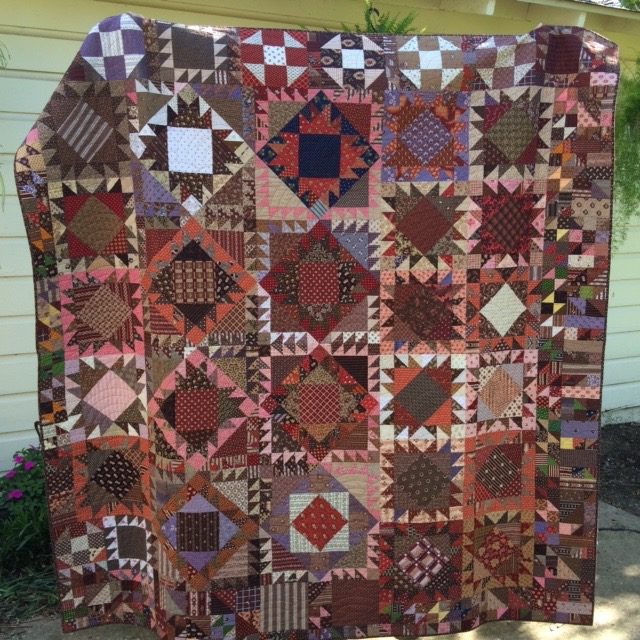
Another challenge was her Gone to Texas quilt, based on an asymmetrical original with many different blocks. “I have to break it down by sections,” she says of her design process.
Based on these three designers, it’s clear that there are many ways to approach quilt design. How about you? Do you design? Share your inspiration and process with us—we’d love to hear!

Comments